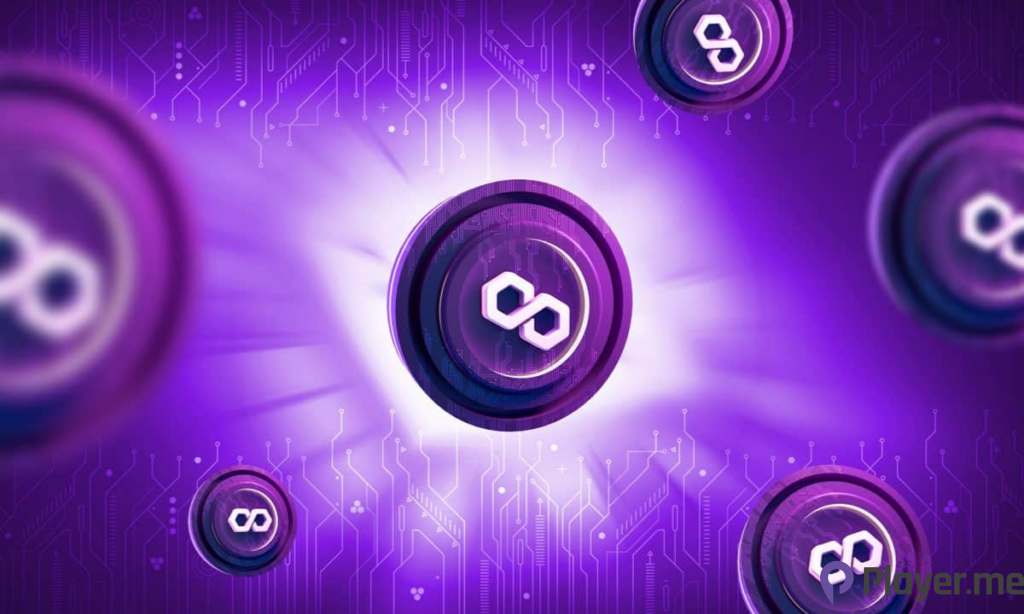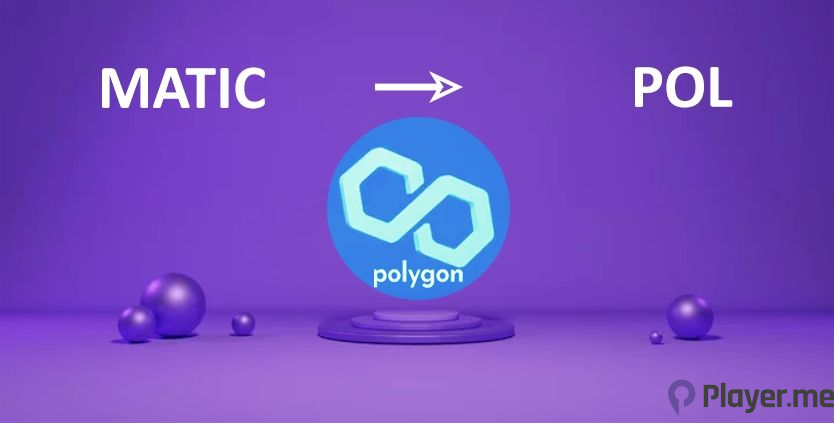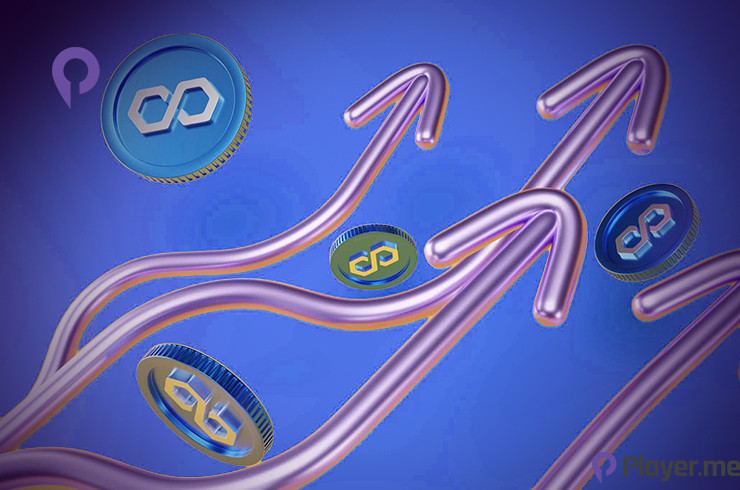Polygon Labs have embarked on a significant development by introducing the Ethereum contract for the new Polygon token, known as POL. This move is a pivotal step toward potentially replacing the existing MATIC token within the Polygon ecosystem. However, it is important to clarify that, at this point, users are not obligated to swap their MATIC tokens for POL. The POL token upgrade has been activated on the Ethereum mainnet, marking a crucial milestone in Polygon’s journey.
The introduction of POL is closely tied to Polygon 2.0, a visionary roadmap unveiled during the summer. This roadmap sets the ambitious goal of scaling Ethereum and building what Polygon terms the “Value Layer of the Internet”. POL is expected to play a pivotal role in realising this grand vision.
Also Read: Will Ethereum Recover? Here’s What Will Help ETH Go Up Again
POL and the Polygon 2.0 Roadmap

POL, often called a next-generation token, is designed to underpin a diverse ecosystem of zero knowledge-based Layer 2 chains. It was officially created on October 25 and is named “Polygon Ecosystem Token”. The Polygon team envisions POL as a driving force that empowers a vast ecosystem of zero knowledge-based Layer 2 chains. This is made possible through the implementation of a “Re-staking protocol”, which allows token holders to stake POL across multiple chains, enabling a variety of functions within the network.
The launch of the POL token serves as a catalyst for implementing other elements within the Polygon 2.0 roadmap. These components include the launch of a new staking layer for the Polygon ecosystem, the upgrade of the current Proof-of-Stake (PoS) network to zkEVM layer-2, and the creation of a shared liquidity protocol that spans all Polygon networks.
Related: 10 Best Crypto-Staking Platforms: A Curated List for 2023
The Features and Functionality of POL
It is essential to emphasise that POL is not currently integrated into the operational systems of Polygon. Both Polygon PoS and Polygon zkEVM networks continue to rely on the old MATIC token for staking, and gas fees on the PoS network are still transacted in MATIC. As a result, users, validators, and app developers are not compelled to transition from MATIC to POL at this juncture.
Polygon Labs initially disclosed their plans for a new layer-2 ecosystem, Polygon 2.0, back in June. On September 14, they made the landmark announcement of adopting the new token, POL. It is worth noting that, at that point, POL was purely a proposal and had not yet been deployed to the Ethereum network.
POL Token Launch and Its Impact
Polygon’s proposed layer-2 ecosystem relies on zero-knowledge proofs for transaction validation, placing it in direct competition with the Optimism ecosystem, which leverages optimistic roll-up technology to secure cross-network messaging.
POL has been designed as a “Hyperproductive token” with the capacity to power a zero knowledge-based Layer 2 chains ecosystem through a native re-staking protocol. This protocol enables POL holders to validate multiple chains and perform various roles on each chain, including sequencing and generating zero-knowledge proofs.
The Transition From MATIC to POL

Importantly, this upgrade does not disrupt the existing operation of Polygon’s PoS or zkEVM networks, as all current contracts continue to function seamlessly. Nevertheless, POL is a key component of a technical upgrade with the ultimate goal of replacing MATIC as the native token of the Polygon network. The transition is expected to be straightforward, involving a simple technical upgrade in which MATIC holders will send their tokens to an upgraded smart contract, receiving an equivalent amount of POL in return.
From a protocol perspective, MATIC and POL are fundamentally incompatible, and POL is slated to replace MATIC fully. This transition fully aligns with Polygon’s broader vision of bringing the Polygon 2.0 roadmap to fruition, where it is poised to become the “Value layer of the internet”. This value layer is envisioned as a cross-chain coordination protocol that unifies zkEVMs, PoS, and Supernets.
Also Read: Crypto Whale Loses $24M in Staked Ethereum to Phishing Attack
The Polygon 2.0 Ecosystem and Improvement Proposals
Polygon Labs’ vision of an interconnected layer-2 Ethereum ecosystem powered by zero-knowledge cryptography takes a significant leap forward by initiating three foundational improvement proposals. These proposals set the stage for the realisation of Polygon 2.0, encompassing four protocol layers: staking, interop, execution, and proving.
Sandeep Nailwal, the co-founder of Polygon, recently elaborated on the ecosystem’s aspiration to become the value layer of the internet through the application of zero-knowledge technology. This approach promises low-fee, high-throughput performance for the broader Ethereum ecosystem. On September 14, Polygon released three Polygon Improvement Proposals (PIPs) outlining technical details for “Phase 0” of the interconnected ZK-powered layer-2 chains network. This phase includes a proposal for the transition and specifications that will see MATIC tokens evolve into POL tokens, which will serve as the native token of the Polygon PoS protocol.
The Three Improvement Proposals
1. PIP-17: This proposal marks the commencement of the upgrade from MATIC to POL, including the transition to POL as the native gas token and staking token for the Polygon ecosystem. It also involves the launch of the staking layer and the migration of Polygon public chains.
2. PIP-18: This proposal provides a technical description of POL tokens, along with accompanying contracts responsible for managing emissions and token migrations. POL tokens can be transitioned at a 1:1 ratio from existing MATIC tokens. The PIP outlines an initial supply of 10 billion tokens and an annual emission rate of 2%, evenly distributed between validator staking rewards and a community treasury.
3. PIP-19: This proposal outlines the update of the native gas token on Polygon PoS from MATIC to POL while ensuring maximum backward compatibility. Importantly, PIP-19 will not impact contracts on Polygon PoS, and the properties of the protocol’s native token will remain unchanged. However, Ethereum contracts awaiting MATIC from the native MATIC bridge may be affected by the upgrade.
Also Read: Exciting News: Crypto Whale Meetup Will Be Held in Dubai This October
The Goals of the Upgrade

The primary goal of this upgrade is to enhance the scalability, security, and user-friendliness of the Polygon network. To achieve this, Polygon is leveraging a novel consensus mechanism known as Proof-of-Stake Liquidity (PoSL), which is touted as a more efficient alternative.
PoSL marks a significant departure from the previous consensus system. Validators are now required to stake their native tokens and liquidity to participate in the network. This innovative approach is designed to boost the liquidity of Decentralised Exchanges (DEXs) operating on Polygon.
With the imminent launch of Polygon 2.0, these DEXs stand to benefit significantly from increased liquidity, which will facilitate seamless token swaps in a low-fee, highly scalable environment. This improved liquidity could contribute to making MATIC and other assets on the Polygon network more accessible and attractive to traders and investors.
A pivotal element of this upgrade is the POL token. By launching POL on the Ethereum mainnet, Polygon Labs is paving the way for a thriving ecosystem of zero knowledge-based Layer 2 chains. POL is described as a “Hyperproductive token” with multiple use cases, including powering the ecosystem, settling fees, enabling governance participation, and providing rewards to stakers.
Related: Crypto Gold Rush The Unveiling Ethereum Mining and Its Profitable Prospects in 2023
Final Thoughts
One of the pressing questions within the Polygon community is whether this upgrade will finally propel MATIC’s price to the elusive $1 mark. While the outcome remains uncertain, there are promising signs. MATIC’s price has already experienced a 30% recovery from its October 2023 lows, and the daily price charts suggest a bullish momentum, as evidenced by the banding of bullish bars along the upper Bollinger Bands. This indicates growing optimism, which could further drive MATIC’s price higher in the near future.
Author Profile
Latest entries
 GAMING2024.06.12Top 4 Female Tekken 8 Fighters to Obliterate Your Opponents in Style!
GAMING2024.06.12Top 4 Female Tekken 8 Fighters to Obliterate Your Opponents in Style! NEWS2024.03.18Elon Musk’s SpaceX Ventures into National Security to Empower Spy Satellite Network for U.S.
NEWS2024.03.18Elon Musk’s SpaceX Ventures into National Security to Empower Spy Satellite Network for U.S. GAMING2024.03.17PS Plus: 7 New Games for March and Beyond
GAMING2024.03.17PS Plus: 7 New Games for March and Beyond GAMING2024.03.17Last Epoch Necromancer Builds: All You Need To Know About It
GAMING2024.03.17Last Epoch Necromancer Builds: All You Need To Know About It





